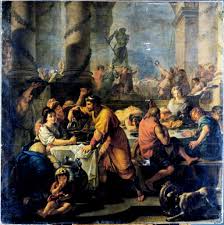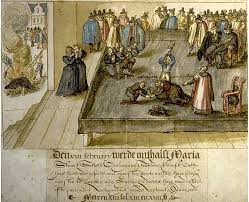Ancient Roman Torture Breaking Wheel Flaying:
The Breaking Wheel
The breaking wheel which was also known as the Catherine wheel or simply the wheel was another torture device used in cases of capital punishment. It was used during the Middle Ages and was still in use into the 19th century. According to Roman Torture Breaking Wheel Flaying, In the Holy Roman Empire, the wheel was punishment reserved primarily for men convicted of aggravated murder that is murder committed during another crime, or against a family member.

While the less severe offenders would be cudgeled ‘top-down’, with the first blow to the neck, causing death, more heinous criminals were punished ‘bottom up’, starting with the legs, and sometimes being beaten for hours. The number and sequence of blows were specified in the court’s sentence. Corpses were left for carrion-eaters, and the criminals’ heads often placed on a spike.
Flaying
Flaying was the removal of skin from the body. Generally, an attempt was made to keep the removed portion of skin intact. Flaying of humans was used as a method of torture or execution, depending on how much of the skin is removed.

There have been records of people flayed after death, generally as a means of debasing the corpse of a prominent enemy or criminal, sometimes related to religious beliefs; sometimes the skin was used, again for deterrence, magical uses, like scalping etc. The Talmud discussed how Rabbi Akiva was flayed by the Romans for the public teaching of Torah.
Disembowelment
Disembowelment or evisceration was the removal of some or all of the organs of the gastrointestinal tract that is the bowels, usually through a horizontal incision made across the abdominal area. Disembowelment may result from an accident but has also been used as a method of torture and execution. In such practices, disembowelment was also accompanied by other forms of torture, and/or the removal of other vital organs. The ancient Roman Empire

Catholic tradition stated that Erasmus of Formiae, also known as Saint Elmo, was finally executed by disembowelment in about A.D. 303 after he had suffered extreme forms of torture during the persecutions of Emperor Diocletian and Maximian.
Impalement
Impalement was the traumatic penetration of an organism by an elongated foreign object such as a stake, pole, or spear, and this usually implies complete perforation of the central mass of the impaled body. While the term may be used in reference to an unintentional accident, it was more frequently used in reference to the deliberate act as a method of torture and execution.

In ancient Rome, the term “crucifixion” could also refer to implement. This derived in part because the term for the one portion of a cross is synonymous with the term for a stake, so that when mentioned in historical sources without specific context, the exact method of execution, whether crucifixion or implement, can be unclear.
Crushing
Death by crushing or pressing was a method of execution that had a history during which the techniques used varied greatly from place to place. The Romans and Carthaginians used this method on occasion. In Roman mythology, Tarpeia was a Roman maiden who betrayed the city of Rome to the Sabines in exchange for what she thought would be a reward of jewelry. She was instead crushed to death and her body cast from the Tarpeian Rock which now bears her name.
Burning
Death by burning otherwise also known as burning alive or burning to death was death brought about by combustion. As a form of capital punishment, burning has a long history as a method of crimes such as treason, heresy, and witchcraft.
Burning was used as a means of execution in many ancient societies. According to ancient reports, Roman authorities executed many of the early Christian martyrs by burning, sometimes by means of the tunica Molesta, a flammable tunic.
Sawing
Sawing was a method of execution used in Europe under the Roman Empire, in the Middle East, and in parts of Asia. The condemned were hung upside-down and sawn apart vertically through the middle, starting at the groin.

Since the body was inverted, the brain received a continuous supply of blood despite severe bleeding, consciousness thereby continuing until, or after, the saw severed the major blood vessels of the abdomen.
Roman Torture Breaking Wheel Flaying Facts
Throughout the time of the Roman Empire, this method of execution was uncommon. In Roman Torture Breaking Wheel Flaying, it was used extensively during the reign of Emperor Caligula when the condemned, including members of his own family, were sawn across the torso rather than lengthways down the body. It is said that Caligula would watch such executions while he ate, stating that witnessing the suffering acted as an appetizer.



